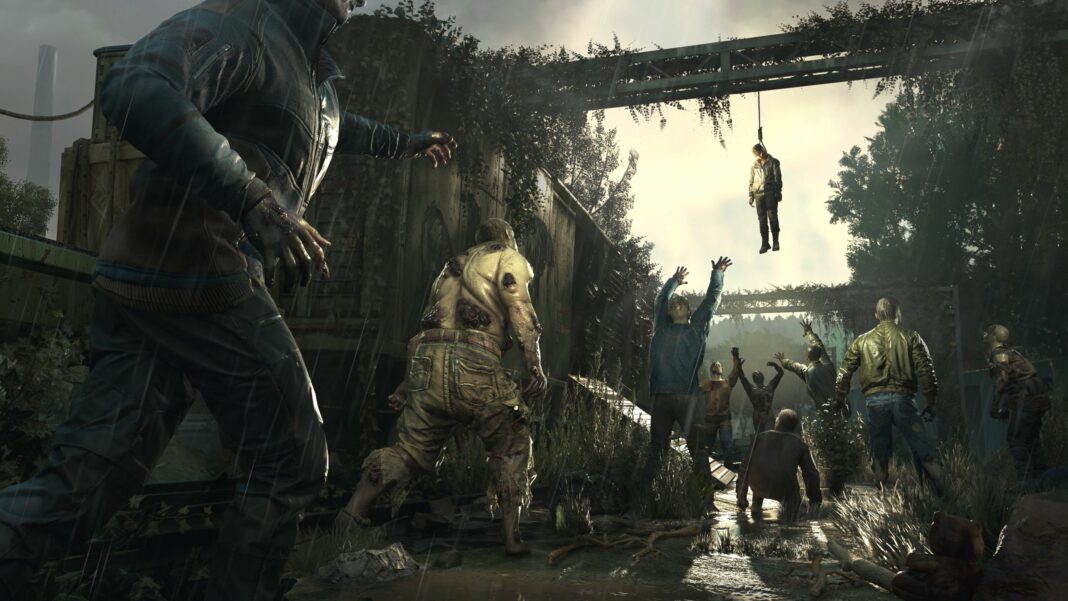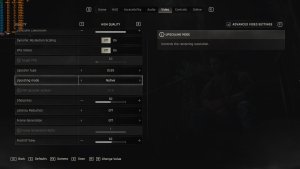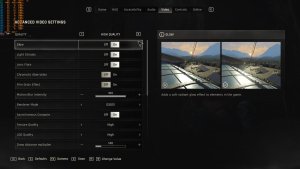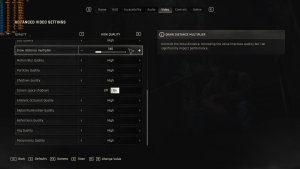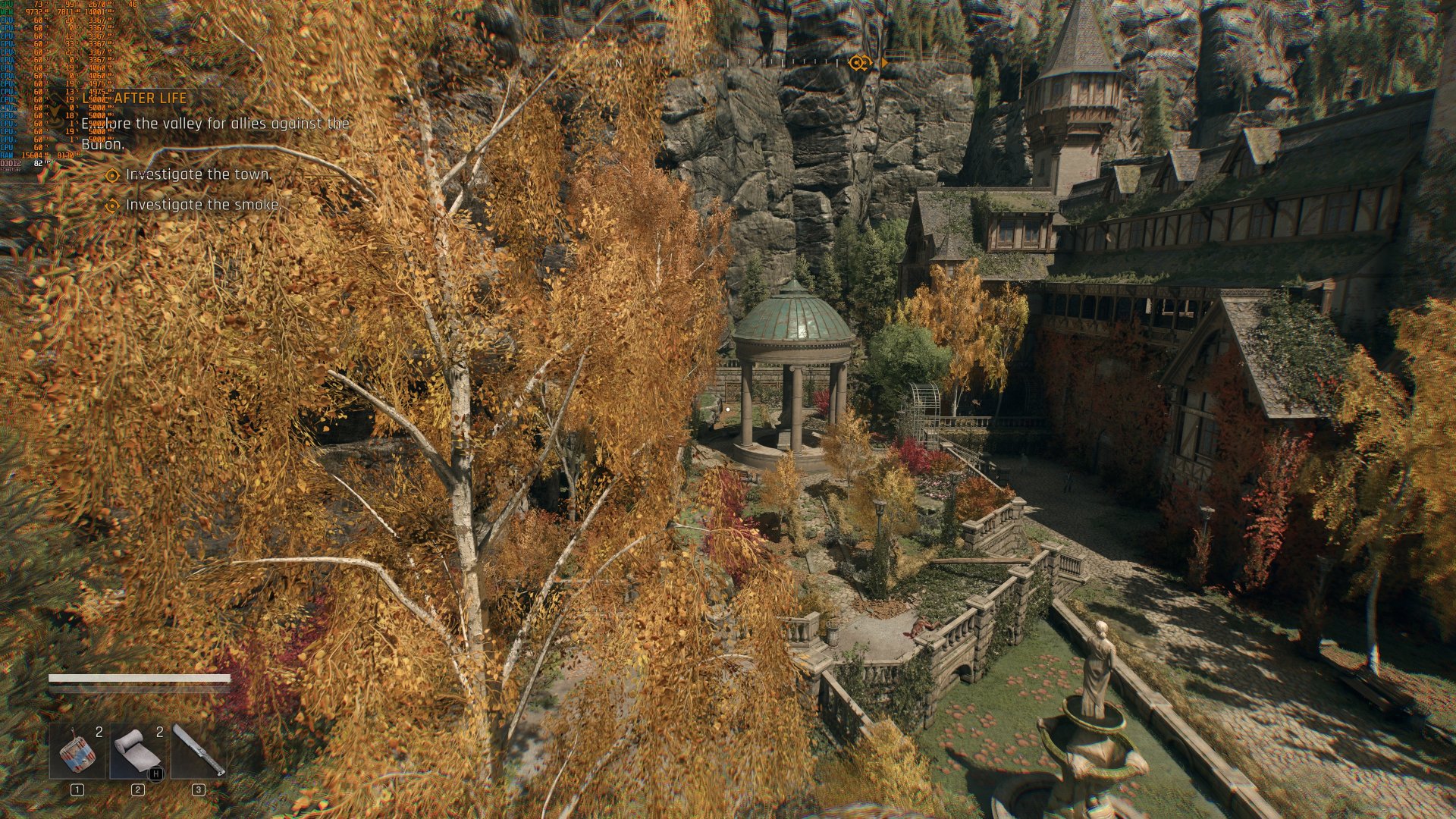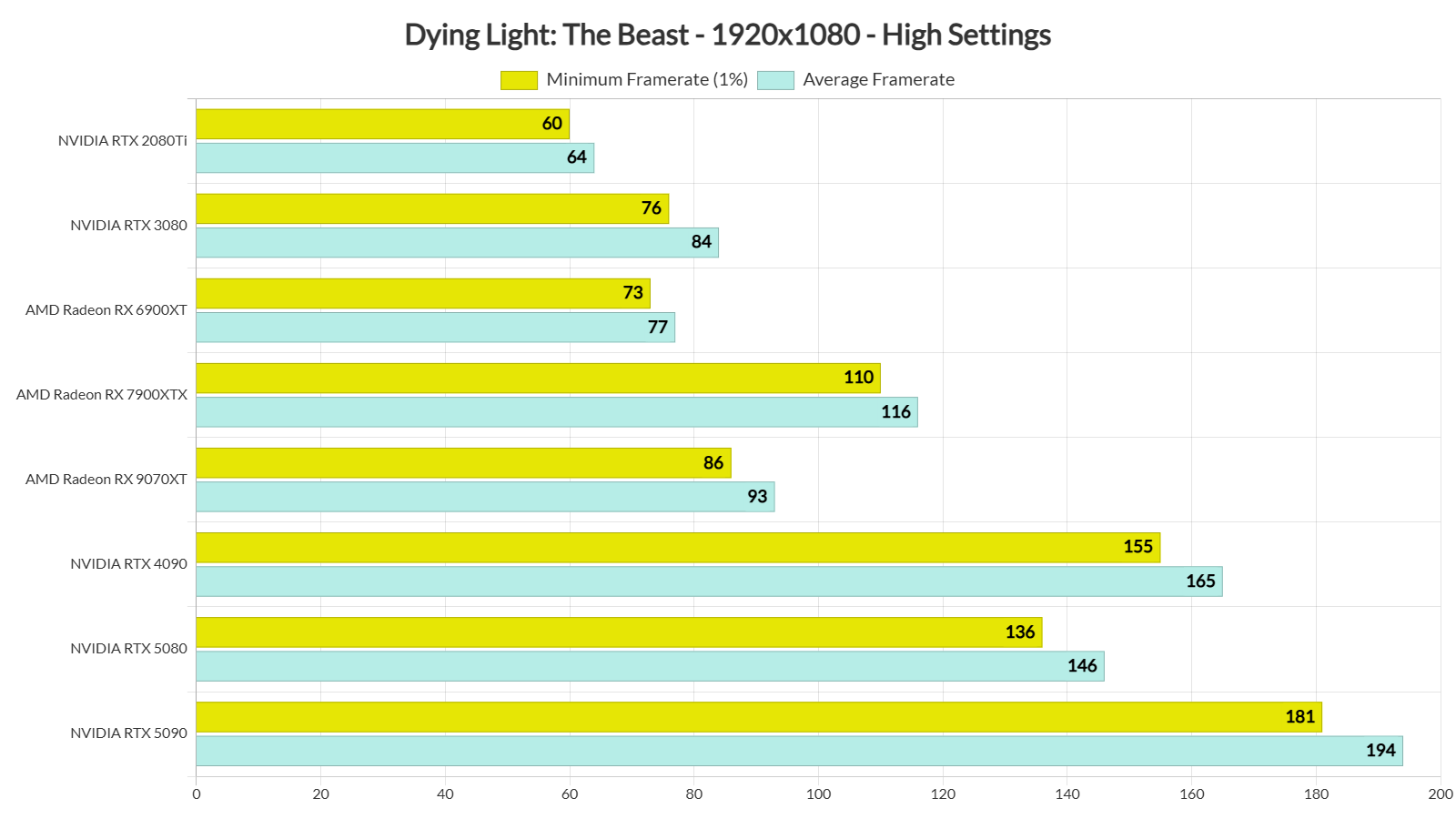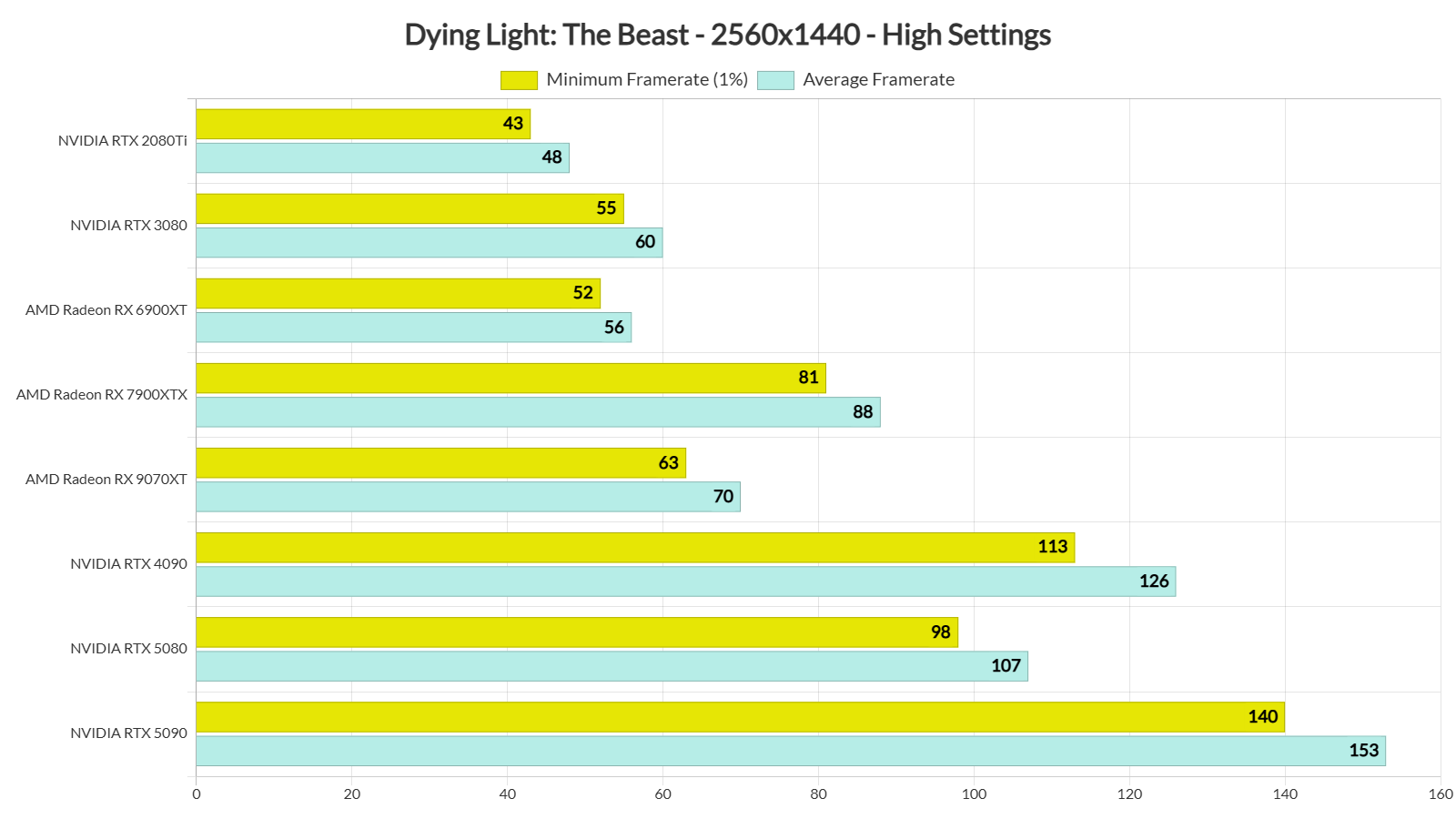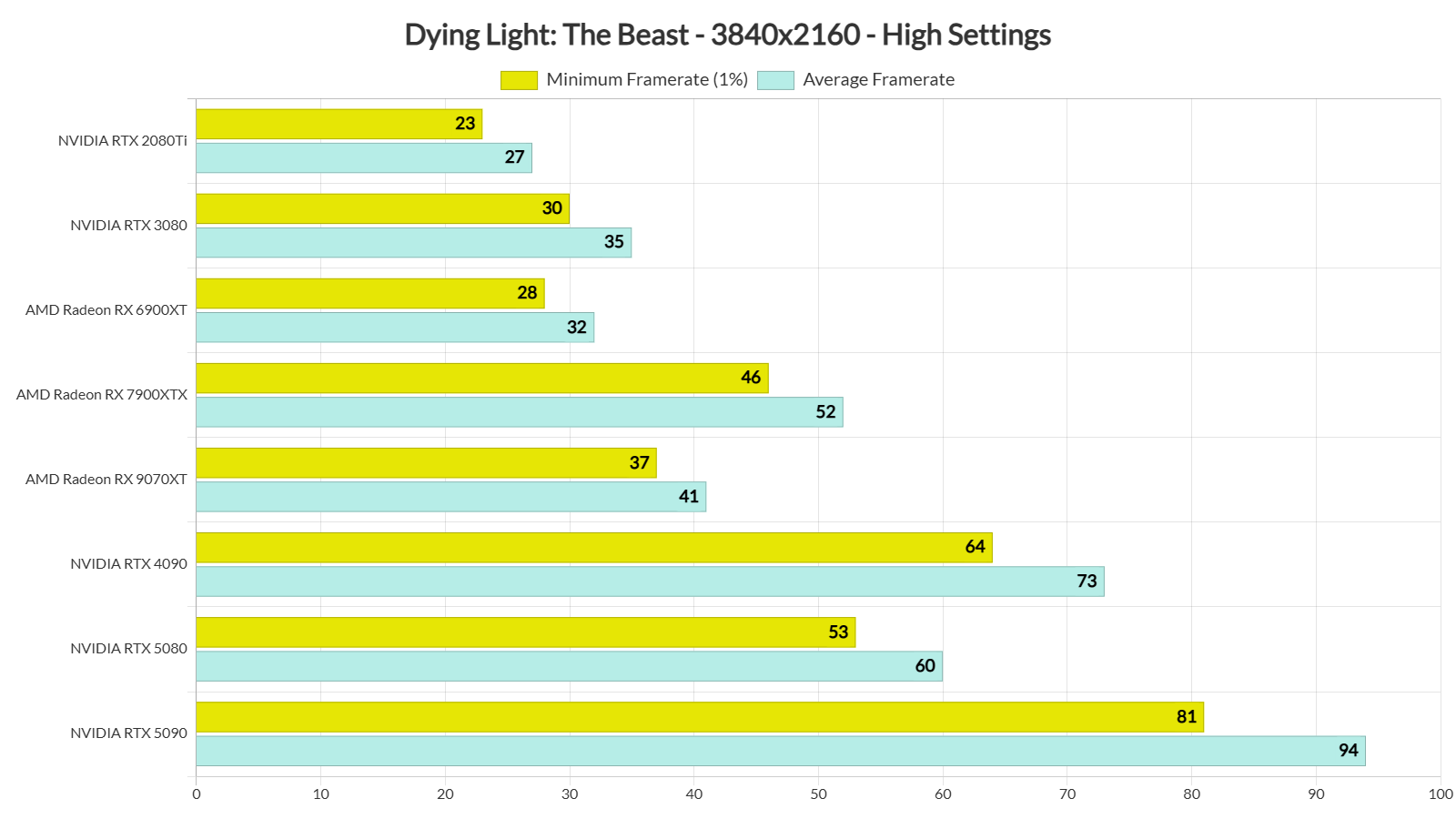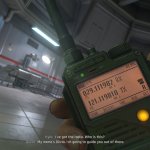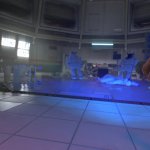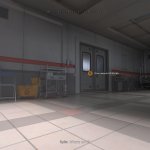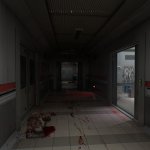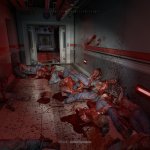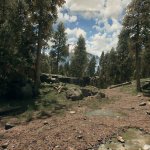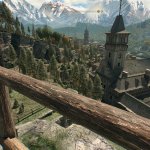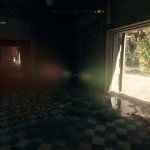Last week, Techland released Dying Light: The Beast on PC. Powered by the C-Engine, it’s time now to benchmark it and examine its performance on the PC.
For our benchmarks, I used an AMD Ryzen 9 7950X3D, 32GB of DDR5 at 6000Mhz, AMD’s Radeon RX 6900XT, RX 7900XTX, RX 9070XT, as well as NVIDIA’s RTX 2080Ti, RTX 3080, RTX 4090, RTX 5080, and RTX 5090. I also used Windows 10 64-bit, the GeForce 581.29, and the Radeon Adrenalin Edition 25.9.2 drivers.
Techland has added a lot of graphics settings to tweak. PC gamers can adjust the quality of Textures, Reflections, Global Illumination, Shadows, and more. The game also supports NVIDIA DLSS 4, AMD FSR 4.0 and Intel XeSS 2.0 from the get-go. However, there is no support for Ray Tracing as of yet. Moreover, there is a FOV slider, and there is support for both DX11 and DX12.
Dying Light: The Beast does not have a built-in benchmark tool. So, for our tests, we used the following area. This appeared to be one of the most demanding scenes we could find early in the game. As such, it should give us a pretty good idea of how the rest of it runs.
All of our GPUs were able to provide a smooth 60FPS experience at Native 1080p with High Settings. Yep, even the NVIDIA RTX 2080Ti was able to provide a smooth gaming experience. This is something that will please a lot of PC gamers. At the same time, we should keep in mind that this is a rasterized game. So, it makes a lot of sense to see these framerates, even on older GPUs.
Our top five GPUs were able to push framerates over 60FPS at 1440p/High Settings. As for Native 4K with High Settings, the only GPUs that were able to provide a constant 60FPS experience were the NVIDIA RTX 4090 and the RTX 5090.
Graphics-wise, I wasn’t impressed with what Dying Light: The Beast was offering on screen. Say what you want about Ray Tracing or UE5’s Lumen, but Dying Light: The Beast looks really, really dated. Textures could have looked better, and there are major pop-in issues. Thankfully, the game has a more advanced lighting system than the one used in Dying Light 2. Still, it’s nowhere close to what ray-traced games currently offer. Things will obviously get better once we get the RT Update. However, this isn’t a “rasterized” miracle. Yes, the game runs great, but there is a reason for that. And that reason is that it does not look as good as most recent PC games.
All in all, Dying Light: The Beast runs great on PC. The game does not require a high-end GPU for 1080p gaming. On top of that, I did not experience any major stutters. DL: The Beast feels super smooth, even when gaming with super high framerates. However, its graphics are not that impressive by today’s standards. Furthermore, for gaming at Native 4K, you’ll need the two best NVIDIA GPUs on the market. Thankfully, there is support for all major PC upscalers, and I highly recommend using them. That is, if you want to game at high resolutions with high framerates.
Enjoy and stay tuned for more!

John is the founder and Editor in Chief at DSOGaming. He is a PC gaming fan and highly supports the modding and indie communities. Before creating DSOGaming, John worked on numerous gaming websites. While he is a die-hard PC gamer, his gaming roots can be found on consoles. John loved – and still does – the 16-bit consoles, and considers SNES to be one of the best consoles. Still, the PC platform won him over consoles. That was mainly due to 3DFX and its iconic dedicated 3D accelerator graphics card, Voodoo 2. John has also written a higher degree thesis on the “The Evolution of PC graphics cards.”
Contact: Email
First Appeared on
Source link

